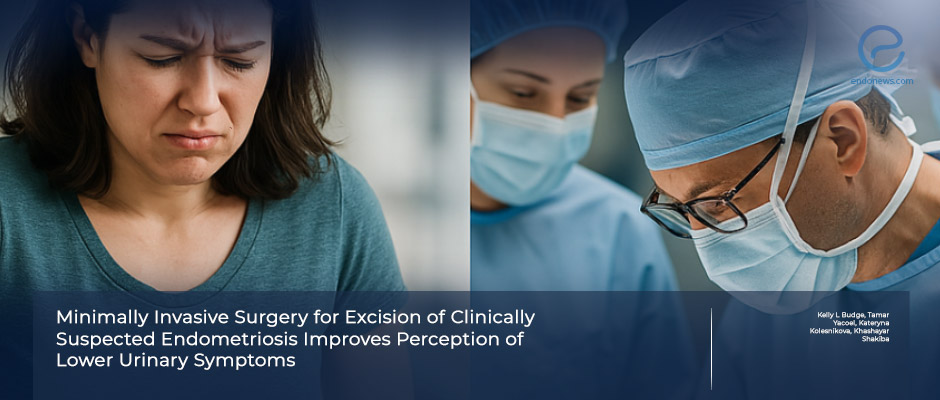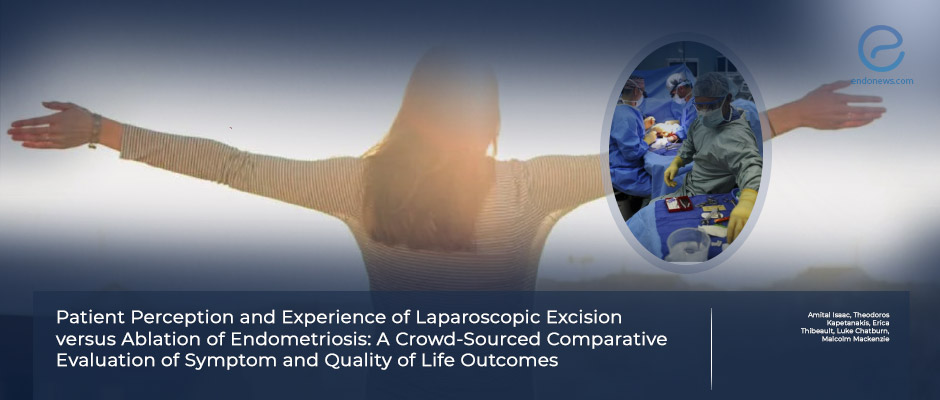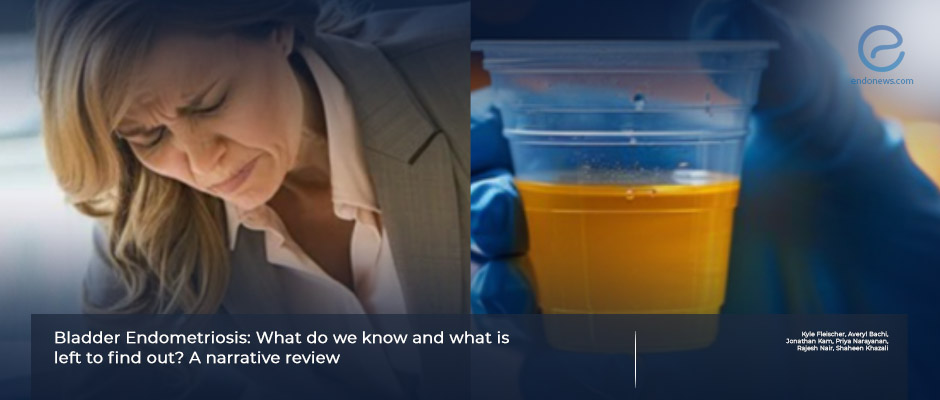Urinary Symptom Relief Following Excision of Suspected Endometriosis
Lower urinary tract symptoms such as frequent urination, urgency, and waking up at night to urinate, are often overlooked or dismissed in patients with endometriosis. A new study published in the Journal of Minimally Invasive Gynecology highlights that these symptoms may…
Key Points Lay SummaryLaparoscopic Excision vs. Ablation in Endometriosis: A Comparison of Symptom and Quality of Life Outcomes
Laparoscopic excision surgery showed greater benefits over many symptoms and quality of life measures in patients with endometriosis who previously underwent ablation surgery. This is according to a new study published in the Journal of Minimally Invasive Gynecology. This finding is…
Key Points Lay SummaryBladder Endometriosis: Current Knowledge and Future Directions
About 70-80% of urinary tract endometriosis occurs in the bladder, particularly affecting the base and dome regions. Endometriotic lesions can penetrate the detrusor muscle either partially or completely. Endometriosis affecting the uterovesical fold peritoneum or deep endometriosis that does not involve…
Key Points Lay SummaryRobotic Surgery Not Linked With More Complications in Certain Cases
Robotic-assisted excision surgery to treat large rectal endometriotic nodules larger than 3 cm is not associated with a higher risk of complications following the operation compared to conventional laparoscopy, according to a new study published in the journal Colorectal Diseases.…
Key Points Lay SummaryTechnical Facts for the Prevention of Complications After Deep Endometriosis Surgery
There are no differences in the risk of rectovaginal fistula in women with rectovaginal endometriosis who were managed by a liberal or restrictive policy of preventive stoma according to a study by French researchers published in the Journal of Minimally…
Key Points Lay SummaryEndometriosis Surgery Improves Sex Life
Women who underwent laparoscopic resection surgery to treat their deep infiltrating endometriosis had improved sexual quality of life and health-related quality of life according to a new study published in the Journal of Minimally Invasive Gynecology. These findings are important…
Key Points Lay SummaryImprovement of the quality of life after surgery for deep infiltrating endometriosis.
Deeply infiltrating endometriosis is the most severe form among the endometriosis types. The required laparoscopic approach is the appropriate excision of endometriotic foci from pelvis, by consideration of failure and side effects of the medical treatments. The specialist endometriosis centers…
Key Points Lay SummaryOperative techniques for Deep Endometriosis Surgery - Shaheen Khazali, MD
In this presentation, Dr. Shaheen Khazali, an endometriosis surgeon specialized in gastrointestinal and urinary tract endometriosis excision and in neuropelveology, talks about the general principles and some techniques for endometriosis surgery focusing on rectovaginal endometriosis. He also describes the "ten…
Key Points Lay Summary
 By Özge Özkaya
By Özge Özkaya


 By Selma Oransay
By Selma Oransay




